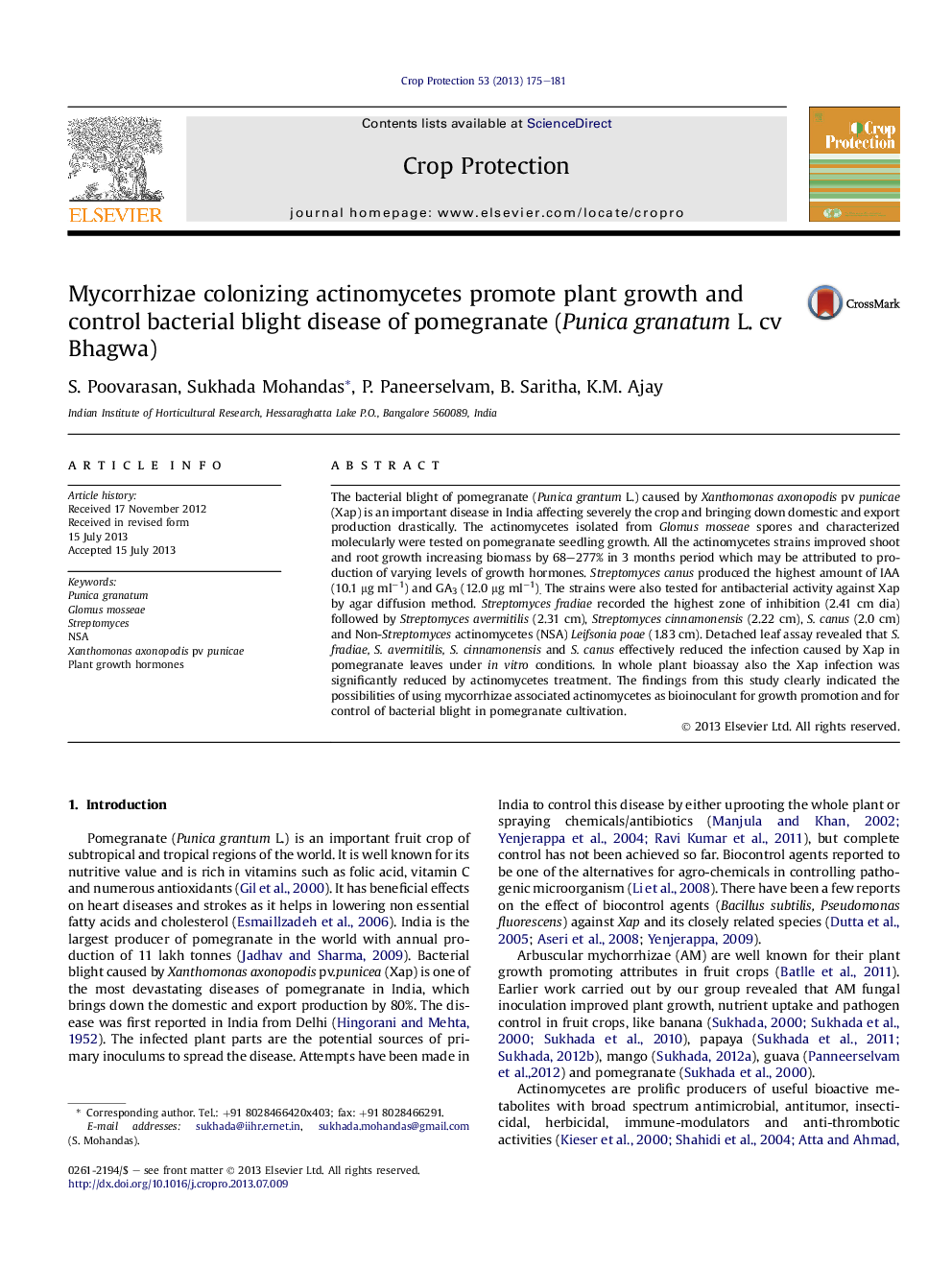| کد مقاله | کد نشریه | سال انتشار | مقاله انگلیسی | نسخه تمام متن |
|---|---|---|---|---|
| 4506038 | 1624334 | 2013 | 7 صفحه PDF | دانلود رایگان |

• Pomegranate, known for its nutritional benefits, is severely affected by bacterial blight disease.
• Actinomycetes, predominately Streptomyces sp, were isolated from the Glomus mosseae spores colonising pomegranate.
• The current study advocates the use of actinomycetes for plant growth promotion.
• The study also recommends use of actinomycetes for control of Xanthomonas axonopodis pv punicae causing bacterial blight.
The bacterial blight of pomegranate (Punica grantum L.) caused by Xanthomonas axonopodis pv punicae (Xap) is an important disease in India affecting severely the crop and bringing down domestic and export production drastically. The actinomycetes isolated from Glomus mosseae spores and characterized molecularly were tested on pomegranate seedling growth. All the actinomycetes strains improved shoot and root growth increasing biomass by 68–277% in 3 months period which may be attributed to production of varying levels of growth hormones. Streptomyces canus produced the highest amount of IAA (10.1 μg ml−1) and GA3 (12.0 μg ml−1). The strains were also tested for antibacterial activity against Xap by agar diffusion method. Streptomyces fradiae recorded the highest zone of inhibition (2.41 cm dia) followed by Streptomyces avermitilis (2.31 cm), Streptomyces cinnamonensis (2.22 cm), S. canus (2.0 cm) and Non-Streptomyces actinomycetes (NSA) Leifsonia poae (1.83 cm). Detached leaf assay revealed that S. fradiae, S. avermitilis, S. cinnamonensis and S. canus effectively reduced the infection caused by Xap in pomegranate leaves under in vitro conditions. In whole plant bioassay also the Xap infection was significantly reduced by actinomycetes treatment. The findings from this study clearly indicated the possibilities of using mycorrhizae associated actinomycetes as bioinoculant for growth promotion and for control of bacterial blight in pomegranate cultivation.
Figure optionsDownload as PowerPoint slide
Journal: Crop Protection - Volume 53, November 2013, Pages 175–181